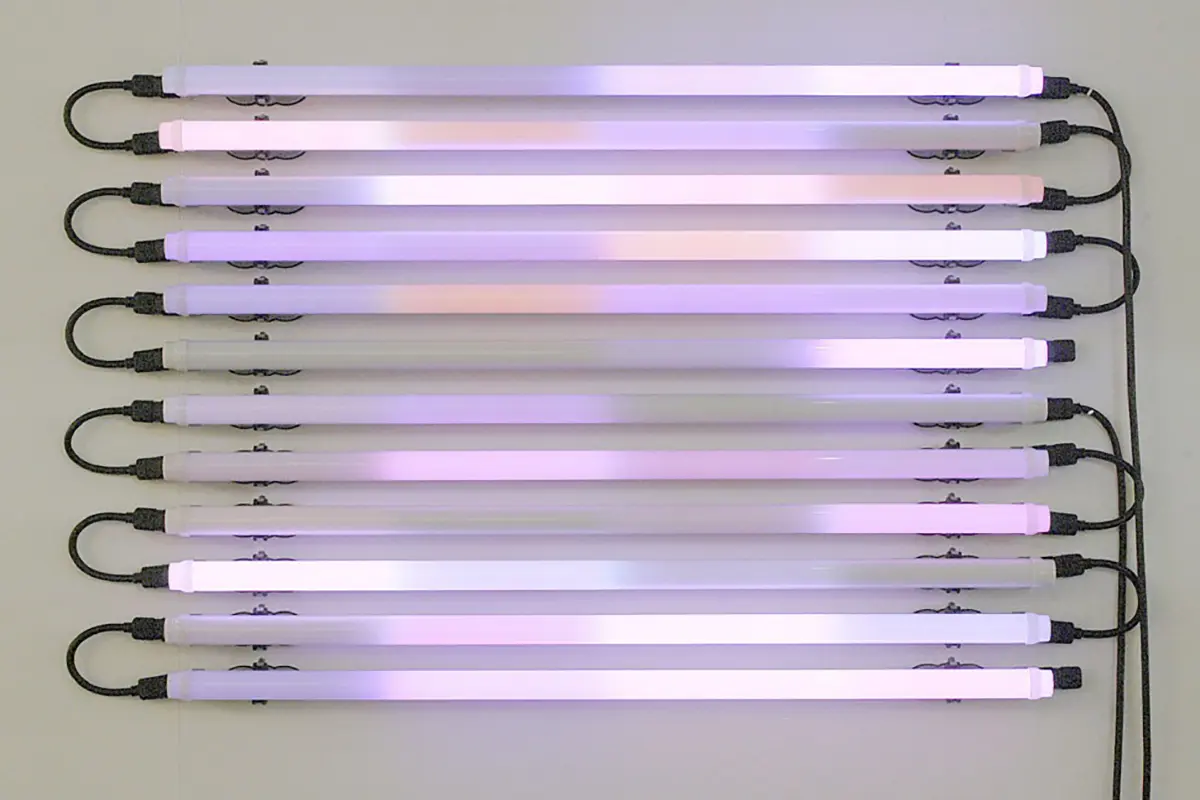
Fundación ARCO Collection: 1986-2006
By Rosina Gómez Baeza.
It was 1986 when IFEMA decided to appoint one of the directors as head of ARCO. Involved in the event from its beginnings, I didn’t find it too hard to take on a challenge I was clearly passionate about.
I drew up a plan to tackle some of the most urgent issues required by the art sector of the time, including the creation ofheritage, , - in other words-, collecting, the internationalisation of the art scene and the generalised access to contemporary art.
Fundación ARCO was created in response to these legitimate demands. Its mission, to start a contemporary art collection that would serve as an example and point of reference for other public and private entities, faithfully reflecting art’s evolution from 1960 to the present day.
At that time, the public collections were in the early stages and it would be years before the contemporary art museums would start to open. The Fundación, through its non-profit nature, would provide shelter for the works acquired in the subsequent editions of the Fair, endowing them with cultural value and meaning, we even studied the possibility of opening a private collections museum in Naves 15 and 16 of Matadero to stimulate collecting and spread contemporary art. Given its uniqueness, the current economic value of the Colección Fundación ARCO would be found surprising.
I consulted numerous professionals about the most ideal figure to select the works, including Carmen Giménez, then director of the Centro Nacional de Exposiciones del Ministerio de Cultura, who proposed Edy de Wilde. I considered him the most suitable person given his prestige and know-how heading up the Van Abbe Museum of Eindhoven and Stedelijk, in Amsterdam, from which he had just retired.
De Wilde established solid foundations on which to build in plurality. The works dating from these years include Polke, Kounellis, Buren, Richard Serra, Richard Long, Donal Judd, Carl Andre, Turrell or Jesús Soto, acquired in 1992, a precursor of the Latin American blossoming that arrived at the end of this decade. Over the course of eight ARCO editions, de Wilde forged the Collection’sión’s personality that, according to Ferrán Barenblit, would become a source of inspiration for those about to be born. We will be forever grateful for his spot-on vision and the seductiveness of his proposals.
In order to persevere in the preservation of this legacy, from 1996 the collection was deposited in the Centro Galego de Arte Contemporáneo (CGAC), in Santiago de Compostela, and its director Gloria Moure was in charge of the acquisitions that year. The following year, 1997, responsibility for acquisitions was entrusted to Jan Debbaut, then-director of the Van Abbe Museum and a close collaborator of the legendary Jan Hoet, founder of SMAK and curator of Documenta IX. Debbaut acquired works by Juan Muñoz, Mike Kelley, Orozco, Kcho, Penone and Thomas Schütte, among others.
From 1998, selection of the works was by the North American curator Dan Cameron, that year hand-in-hand with the future director of Whitechapel in London, Iwona Blazwick, curator at the time of the Tate Modern. From 1999 until 2006, my last ARCO, Cameron and María de Corral, directors of Fundación La Caixa and Reina Sofía Museum would select one-hundred and ninety-four works. The variety and diversity of the works is extraordinary.
A recent history of art can be narrated through the collection, as expressed by Ferrán Barenblit in the magnificent catalogue published in 2014 during his time as the directorCA2M Centro de Arte Dos de Mayo. In this same catalogue, Estrella de Diego highlights the radicality of certain pieces, acknowledging the talent of those who selected them. A powerful collection in the solidity of the names and the quality of the works, that, as María de Corral highlights in the same publication, caused general excitement, as there were no other collections of these characteristics in Madrid.
Colección Fundación ARCO is a sort of “collection of collections”, greatly enriched by the multiple perspectives that have shaped it over time and as a result consequence of how the different talented professionals that coexist in it complement each other. I see with enormous satisfaction that it is just as alive today as it was that 17th of February in 1987 when Edy de Wilde chose the first acquisitions.
Image: Leo Villareal. Untitled. 2003. Fotografía CA2M

